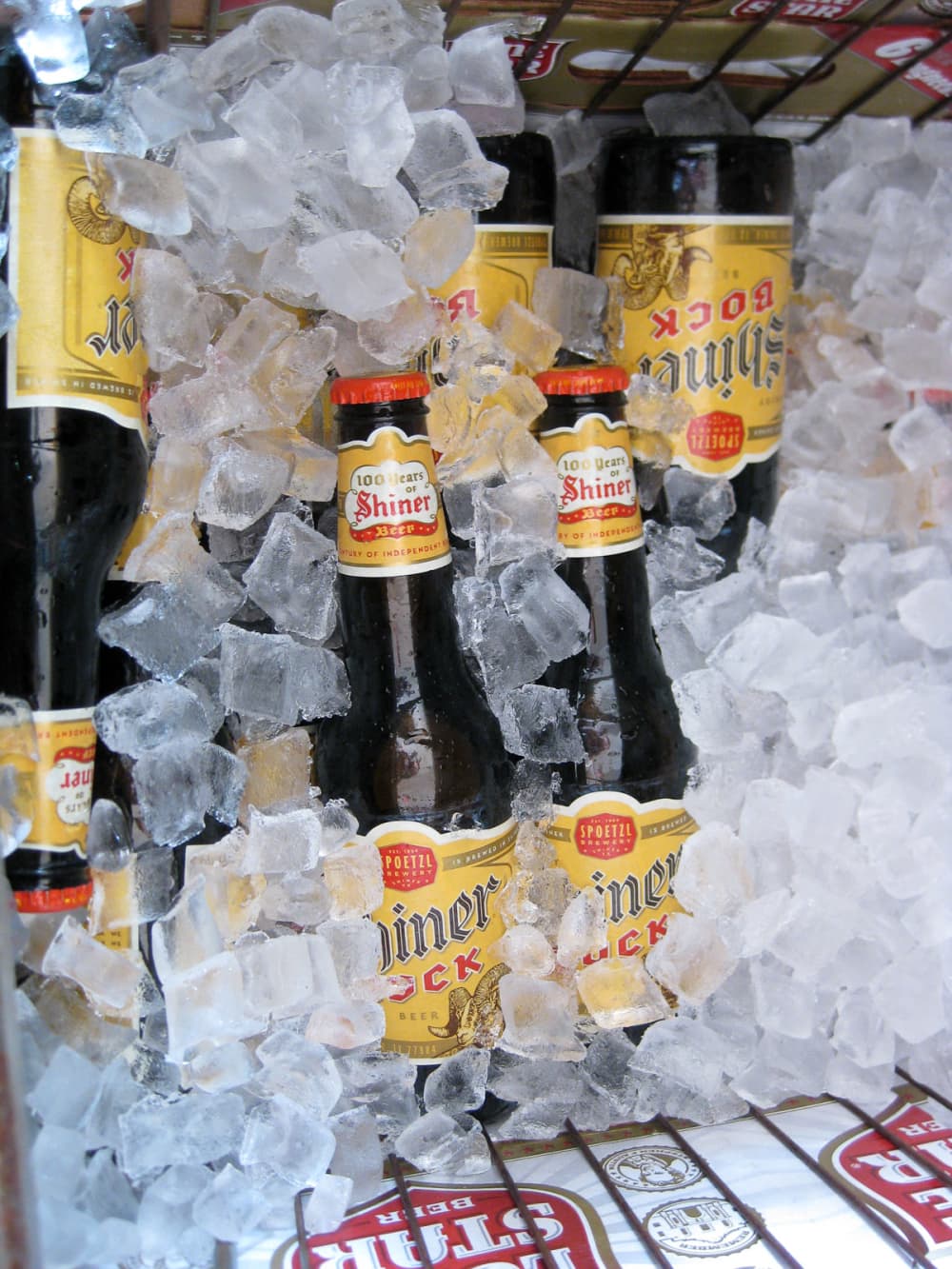We ♥ HOU
At friendly West Alabama Ice House, it's love at first sip
 The landmark sign at West Alabama Ice HousePhoto by Peter Barnes
The landmark sign at West Alabama Ice HousePhoto by Peter Barnes Just pull on up and join the laid-back crowd.Photo by Peter Barnes
Just pull on up and join the laid-back crowd.Photo by Peter Barnes Plastic red ashtrays line the outdoor bar.Photo by Peter Barnes
Plastic red ashtrays line the outdoor bar.Photo by Peter Barnes West Alabama Ice House is a pet-friendly place.Photo by Peter Barnes
West Alabama Ice House is a pet-friendly place.Photo by Peter Barnes And, of course, you'll find plenty of ice-cold beerPhoto by Peter Barnes
And, of course, you'll find plenty of ice-cold beerPhoto by Peter Barnes
In the age of strip malls, 14-ounce “pint” glasses and waitresses who push specials like telemarketers, there’s still a refuge for the drinking man who just wants to enjoy a Lone Star with his dog.
It’s the neighborhood ice house, and it’s where I love Houston the most.
I moved here largely indifferent to Texas culture, yet a few blocks from my home I regularly find myself indulging in one of its most endearing relics. The West Alabama Ice House is where I meet my friends after work. It’s the last stop on my long bike rides, and it’s my respite on summer days when fat drops of moisture from our swampy city roll off my icy beer as steadily as the sweat from my forehead.
The crowd thins out in winter, and fewer people shoot hoops beside the picnic tables out back. But behind a wall of plastic sheeting secured by zip ties, a heater resembling a jet engine keeps the open-air bar warm and the atmosphere alive.
“Avoid the last-minute reservation craziness. Dump your lover and drink with us instead,” a sign in dry-erase marker offered patrons just before Valentine’s Day. Beside it, the bartender took a seat on a swing dangling from the ceiling after serving a few reasonably priced bottles of beer. Then, as the sun set on the scraggly palms that line Alabama, I got the chance to meet Pete Markantonis.
“If you hang out here, two, three nights in, chances are you’ll make some friends,” he says, and after hearing him tell of two decades managing the bar, I’m inclined to believe him.
Ice houses emerged in south Texas to sell blocks of ice in the age before refrigeration. They evolved over the decades into small stores, and in West Alabama’s case, a garage built in 1928. Since it was illegal to sell hard liquor by the drink in Texas until 1969, ice houses’ ability to sell bottles of beer eventually turned them into a sort of outdoor neighborhood tavern.
“When I got here, there wasn’t even a sound system for the bar,” Markantonis says. Instead, the rhythms of the 1980s belted from the radios of cars triple parked beneath a large awning to one side of the building. When the bar opened at 7 a.m., some 150 to 200 retirees would gather to play dominoes.
Few of the old timers remain, but the sense of community endures. About 1,000 people attended their 15th annual Star of Hope crawfish boil, devouring 1,000 pounds of mud bugs in the process. Likewise, the Montrose Beer and Gun Club has brought in $15,000 for charity three years in a row at its annual chili cook off.
As Markantonis tells me about how his father, Jerry, immigrated from Greece during World War II and eventually added the ice house to bars he owned downtown, I watched kids run around while their parents greeted their friends. Tables of college students flirted beside middle-aged locals and sharply dressed office types on their way home from work.
It’s a scene that’s harder and harder to find in Houston, as changing neighborhoods have whittled the original ice houses’ ranks to just a handful. At McDuffie Street and Alabama, the retirees who once populated the surrounding homes have largely moved on, and the neighborhood looks different than it did the day when Markantonis’ father first handed him a snub-nosed .38 pistol and the keys to the family’s newly purchased business 22 years ago. Yet even as yuppies build townhouses a few blocks away, more people keep discovering the joy of having a cold beer outside with the neighbors, and Markantonis intends to keep it that way:
“I hope to keep it open as long as I’m alive.”
